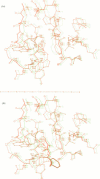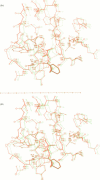Abstract
The specificity of the proteolytic enzyme, papain, for the peptide bond of the substrate adjacent to that about to be cleaved and for the acyl residue of some N-acylglycine derivatives is manifest almost exclusively in the formation of the acyl-enzyme from the enzyme–substrate complex. Models for the enzyme–substrate complex and acyl-enzyme intermediate are suggested that account for these observations. In particular it is suggested that the peptide bond of the substrate adjacent to that about to be cleaved, is bound in the cleft of the enzyme between the NH group of glycine-66 and the backbone C=O group of aspartic acid-158, and provides a sensitive amplification mechanism through which the specificity of the enzyme for hydrophobic amino acids such as l-phenylalanine is relayed. It is also suggested that the distortion in the enzyme–substrate complex and the binding of the peptide bond adjacent to that about to be cleaved are also linked and behave co-operatively, the distortion of the protein facilitating binding and the stronger binding facilitating distortion. The results imply that between the enzyme–substrate complex and the acyl-enzyme a relaxation of the protein conformation must occur.
Full text
PDF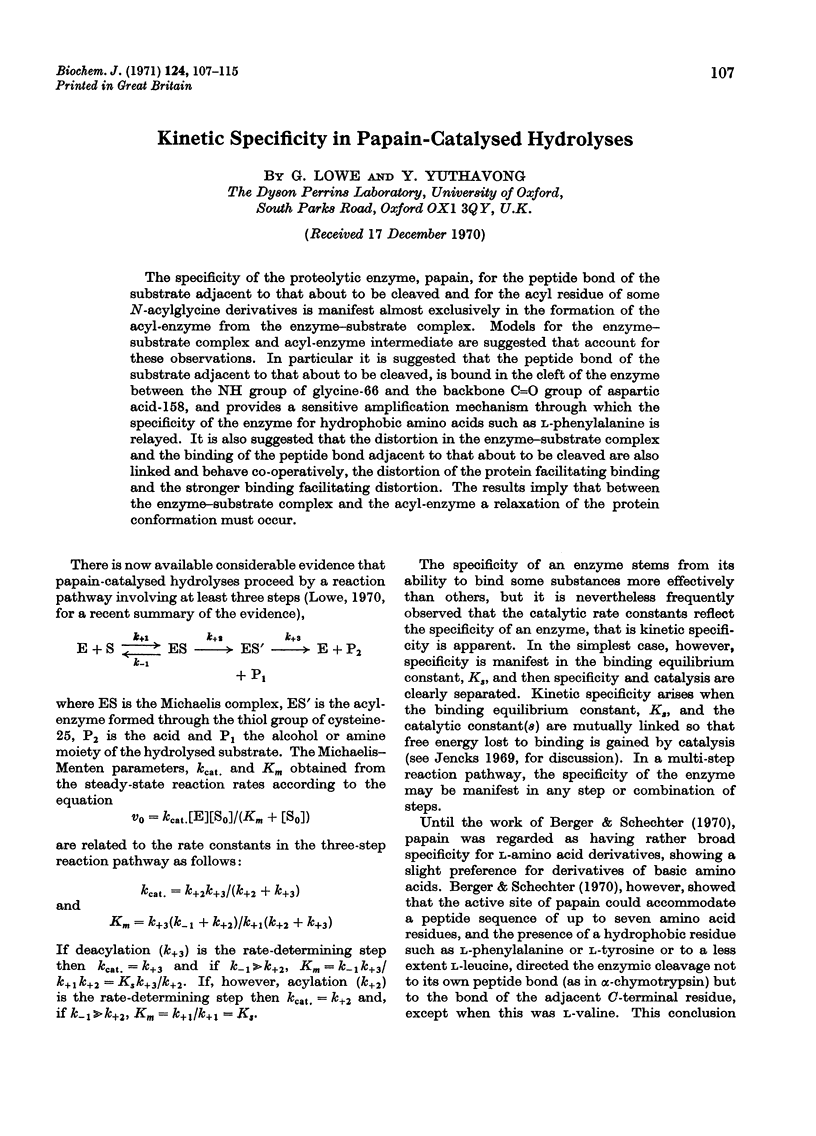
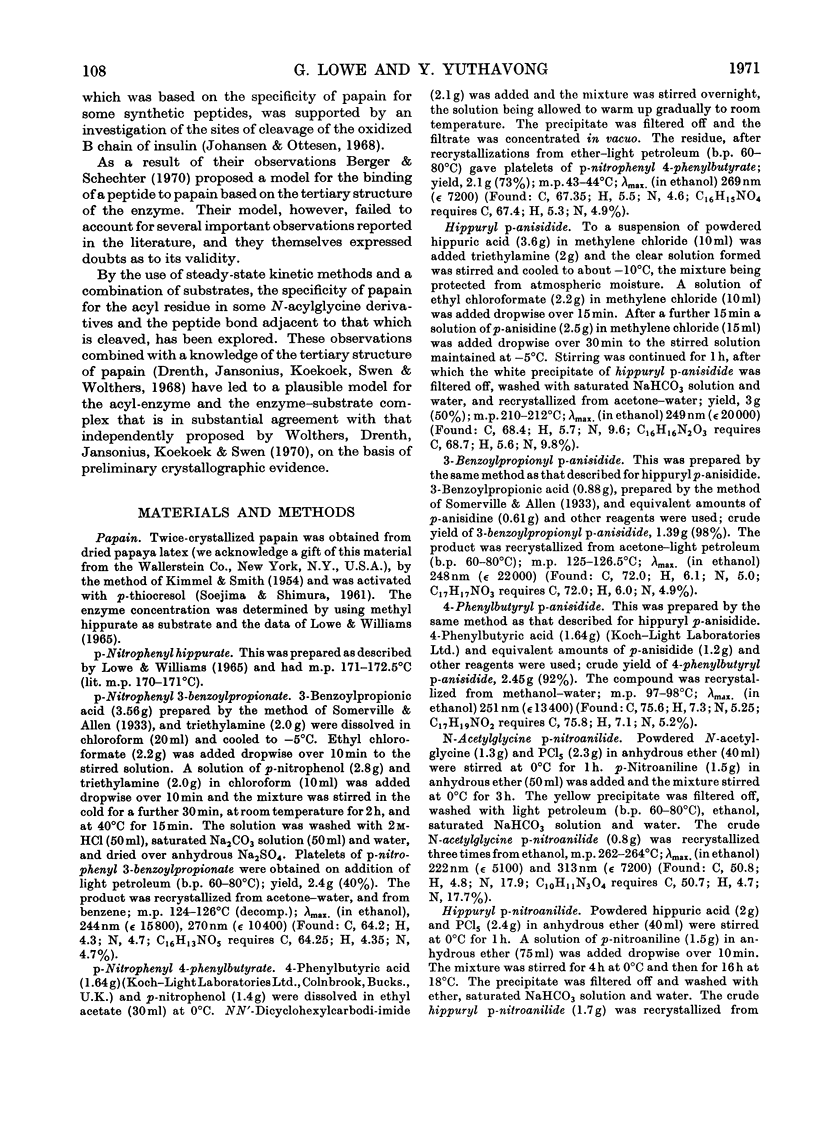

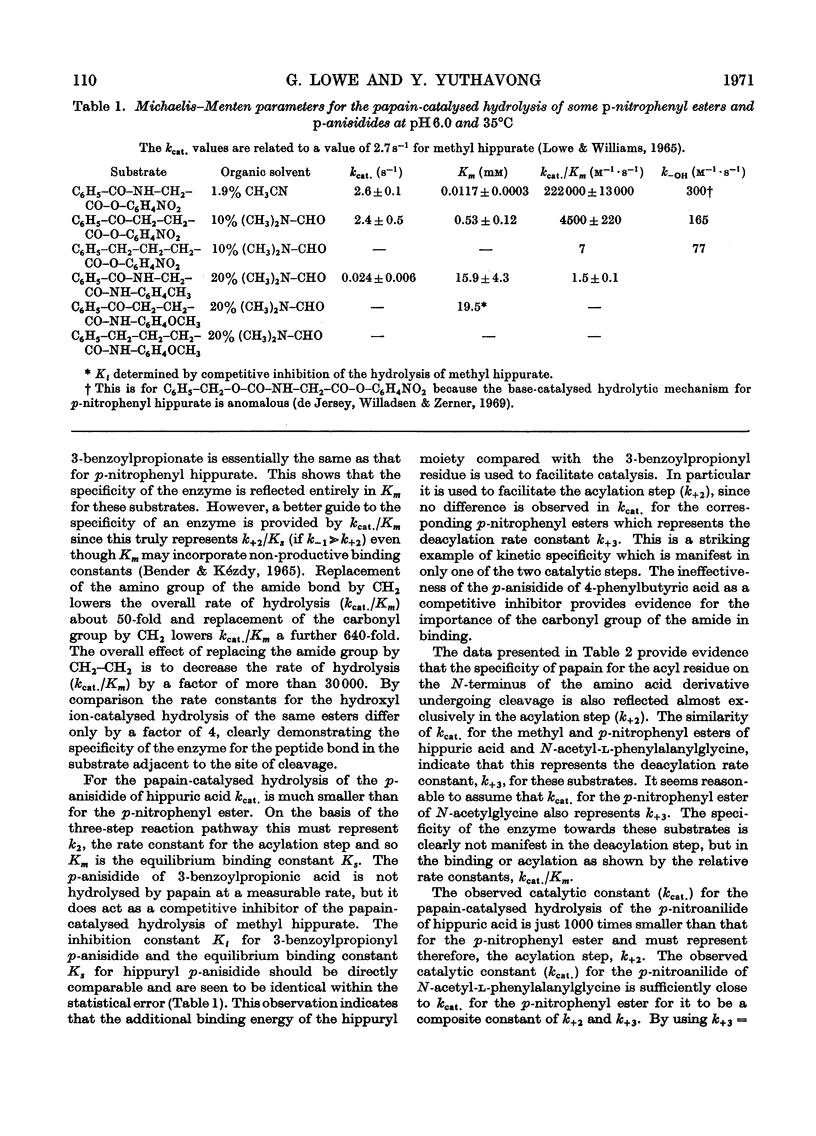
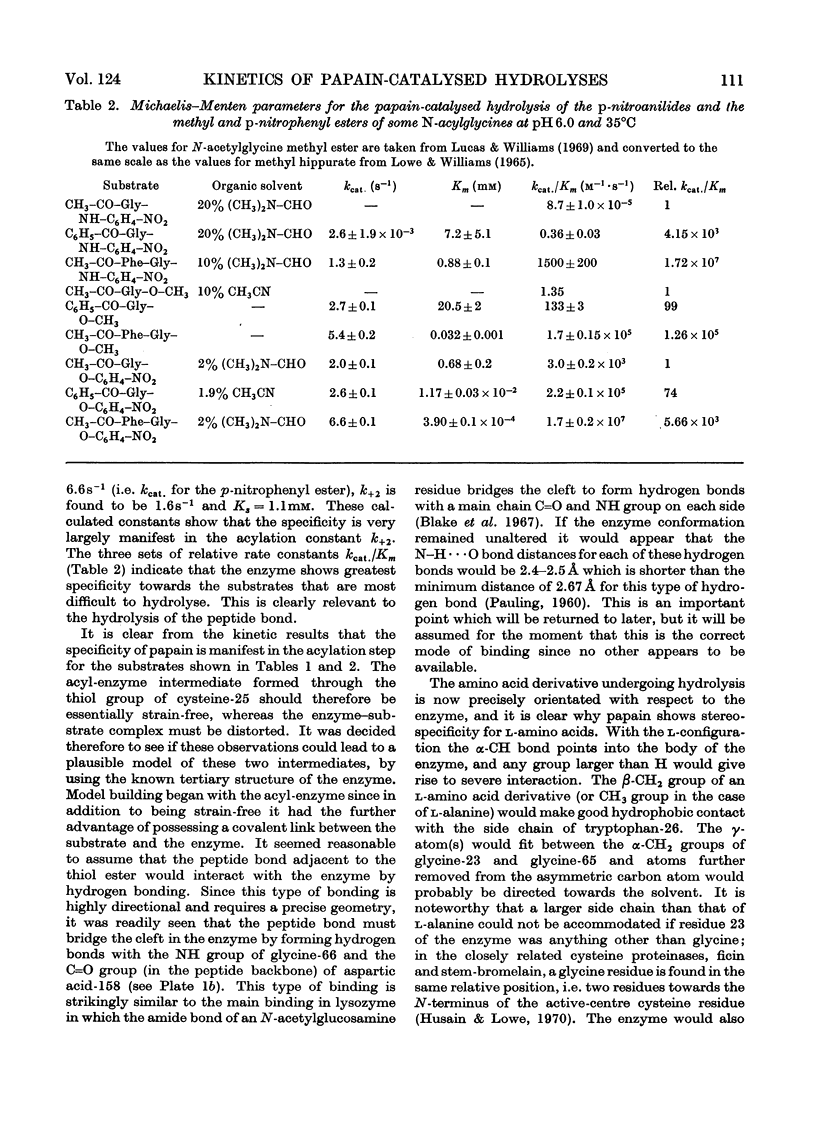
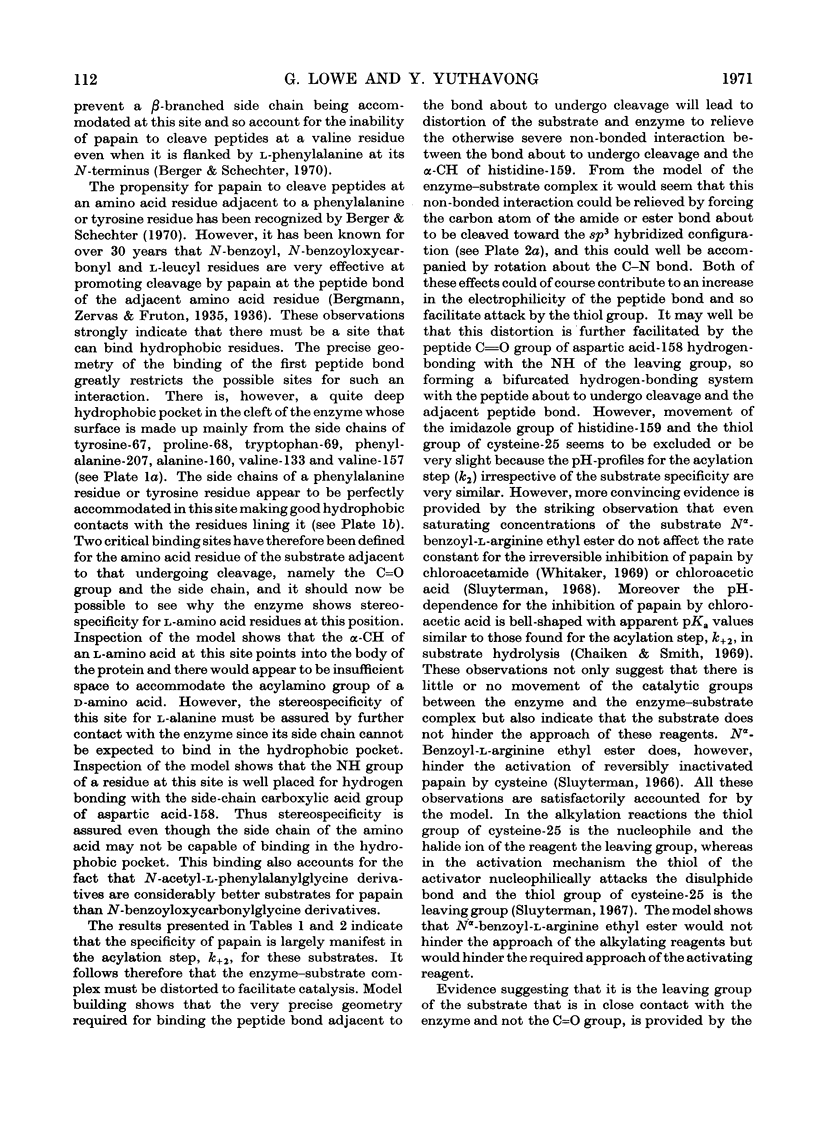
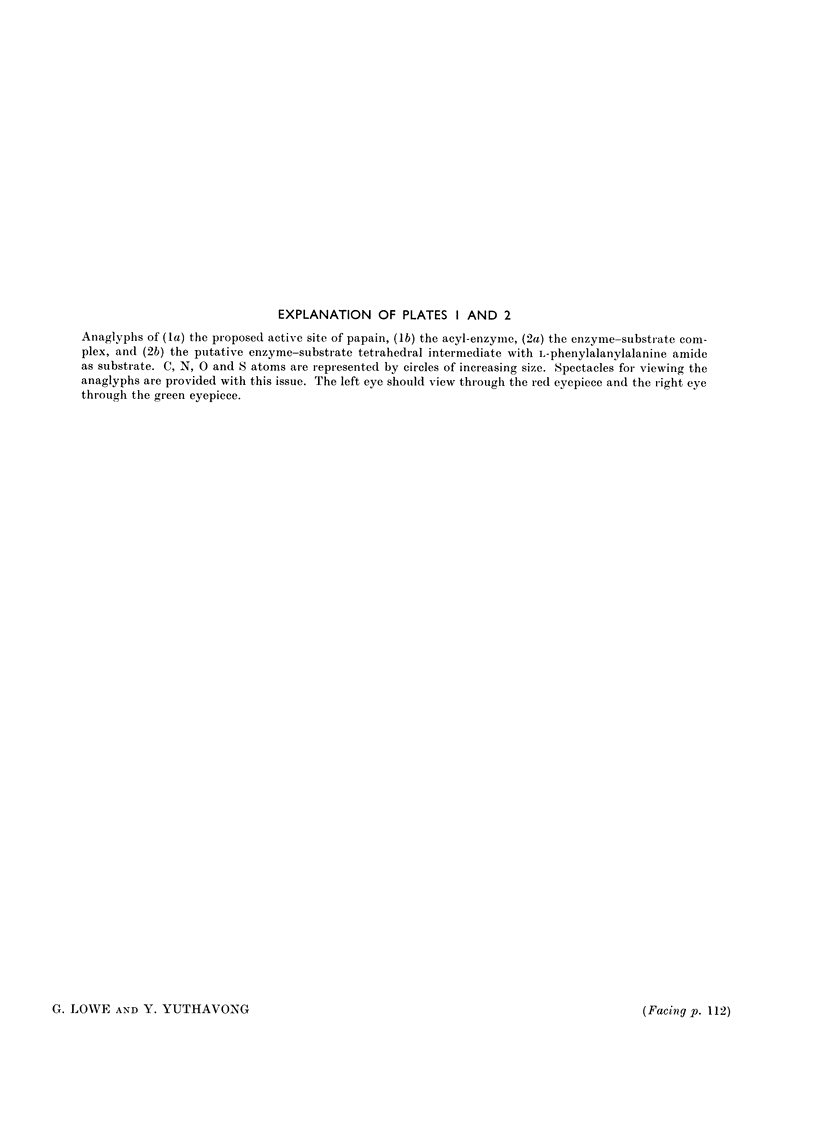

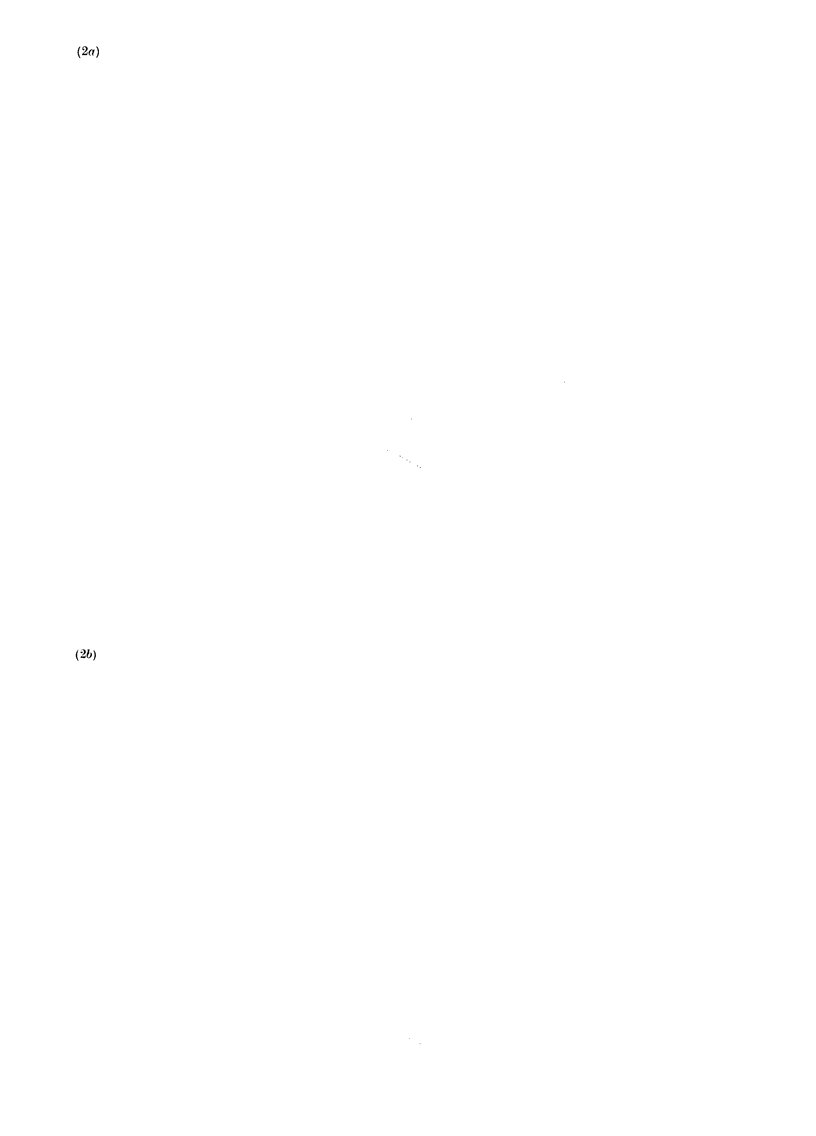
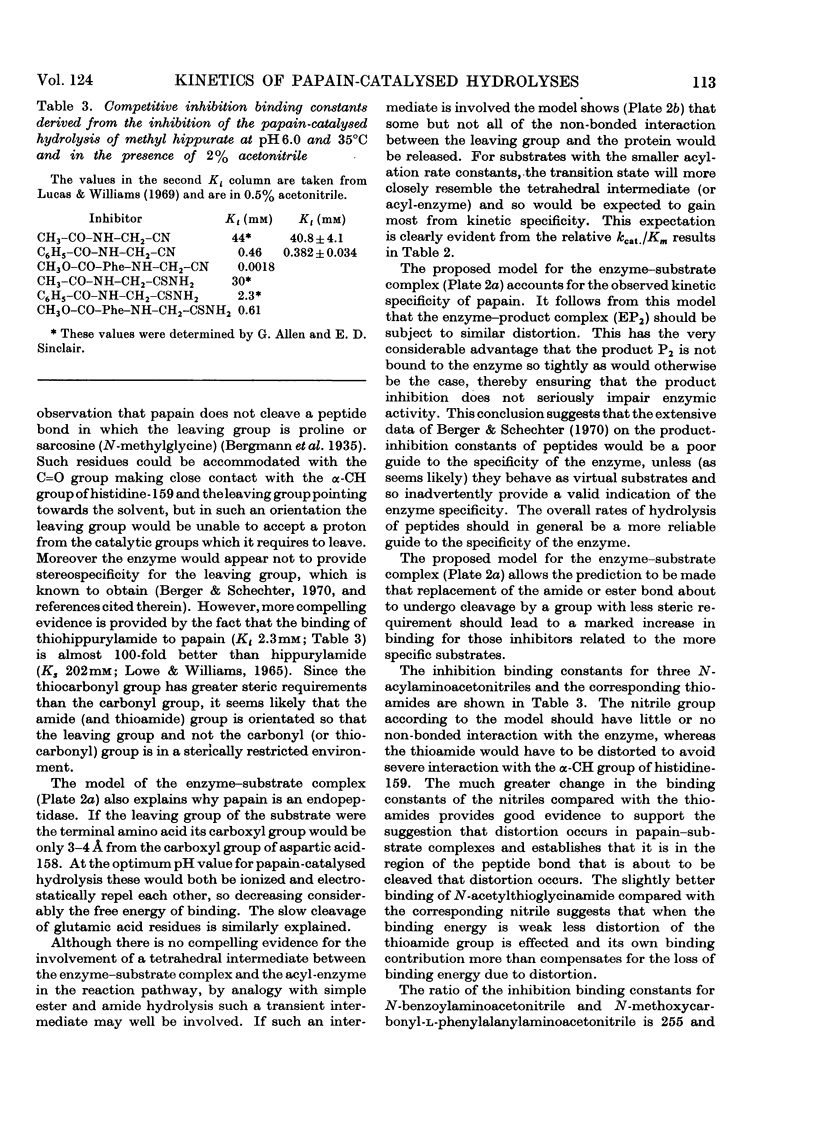
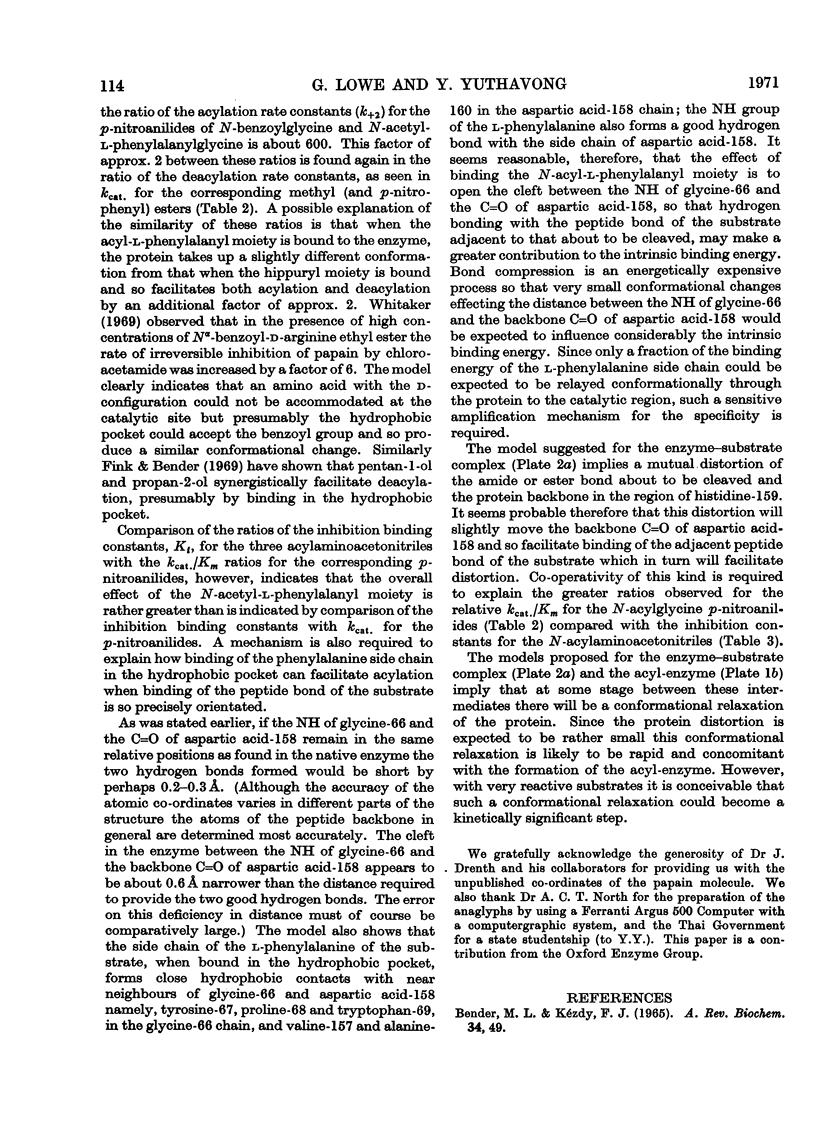
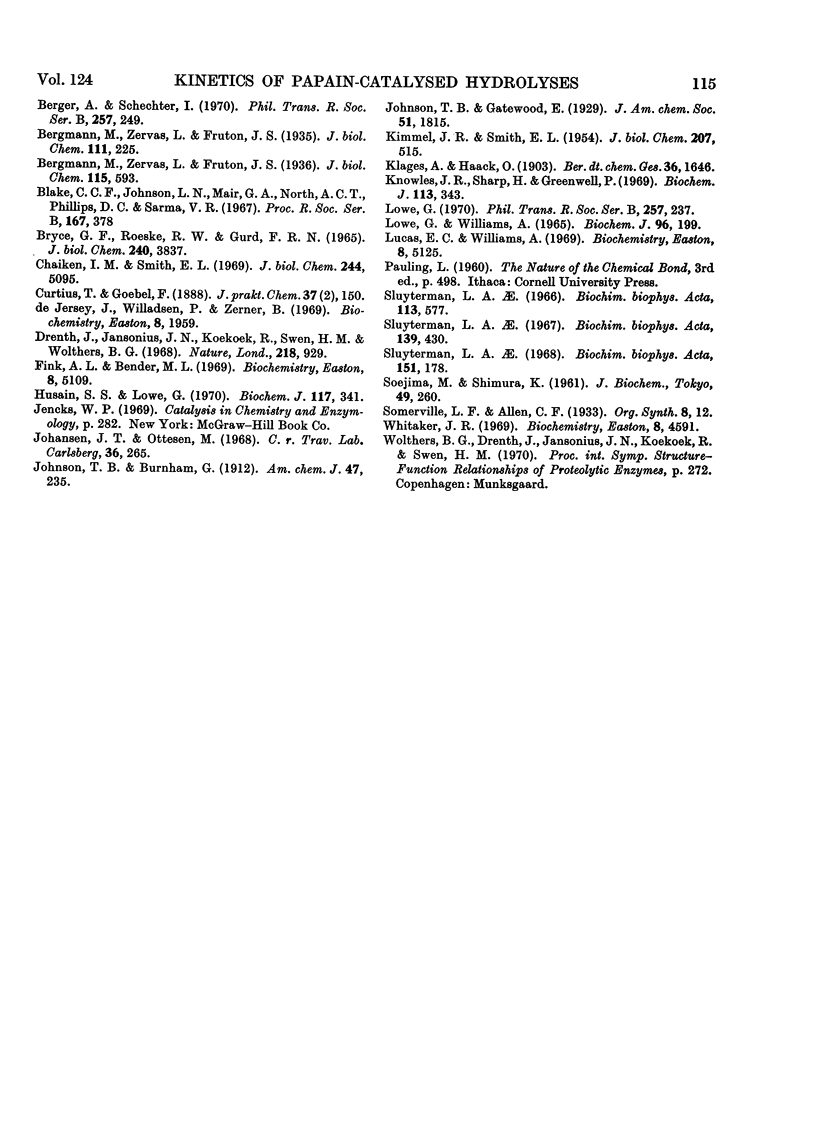
Images in this article
Selected References
These references are in PubMed. This may not be the complete list of references from this article.
- Berger A., Schechter I. Mapping the active site of papain with the aid of peptide substrates and inhibitors. Philos Trans R Soc Lond B Biol Sci. 1970 Feb 12;257(813):249–264. doi: 10.1098/rstb.1970.0024. [DOI] [PubMed] [Google Scholar]
- Blake C. C., Johnson L. N., Mair G. A., North A. C., Phillips D. C., Sarma V. R. Crystallographic studies of the activity of hen egg-white lysozyme. Proc R Soc Lond B Biol Sci. 1967 Apr 18;167(1009):378–388. doi: 10.1098/rspb.1967.0035. [DOI] [PubMed] [Google Scholar]
- Bryce G. F., Roeske R. W., Gurd F. R. Cupric ion complexes of histidine-containing peptides. J Biol Chem. 1965 Oct;240(10):3837–3846. [PubMed] [Google Scholar]
- Chaiken I. M., Smith E. L. Reaction of the sulfhydryl group of papain with chloroacetic acid. J Biol Chem. 1969 Oct 10;244(19):5095–5099. [PubMed] [Google Scholar]
- De Jersey J., Willadsen P., Zerner B. Oxazolinone intermediates in the hydrolysis of activated N-acylamino acid esters. The relevance of oxazolinones to the mechanism of action of serine proteinases. Biochemistry. 1969 May;8(5):1959–1967. doi: 10.1021/bi00833a028. [DOI] [PubMed] [Google Scholar]
- Drenth J., Jansonius J. N., Koekoek R., Swen H. M., Wolthers B. G. Structure of papain. Nature. 1968 Jun 8;218(5145):929–932. doi: 10.1038/218929a0. [DOI] [PubMed] [Google Scholar]
- Fink A. L., Bender M. L. Binding sites for substrate leaving groups and added nucleophiles in papain-catalyzed hydrolyses. Biochemistry. 1969 Dec;8(12):5109–5118. doi: 10.1021/bi00840a065. [DOI] [PubMed] [Google Scholar]
- Husain S. S., Lowe G. The amino acid sequence around the active-site cysteine and histidine residues of stem bromelain. Biochem J. 1970 Apr;117(2):341–346. doi: 10.1042/bj1170341. [DOI] [PMC free article] [PubMed] [Google Scholar]
- Johansen J. T., Ottesen M. The proteolytic degradation of the B-chain of oxidized insulin by papain, chymopapain and papaya peptidase. C R Trav Lab Carlsberg. 1968;36(15):265–283. [PubMed] [Google Scholar]
- KIMMEL J. R., SMITH E. L. Crystalline papain. I. Preparation, specificity, and activation. J Biol Chem. 1954 Apr;207(2):515–531. [PubMed] [Google Scholar]
- Knowles J. R., Sharp H., Greenwell P. The pH-dependence of the binding of competitive inhibitors to pepsin. Biochem J. 1969 Jun;113(2):343–351. doi: 10.1042/bj1130343. [DOI] [PMC free article] [PubMed] [Google Scholar]
- LOWE G., WILLIAMS A. PAPAIN-CATALYSED HYDROLYSIS OF SOME HIPPURIC ESTERS. A NEW MECHANISM FOR PAPAIN-CATALYSED HYDROLYSIS. Biochem J. 1965 Jul;96:199–204. doi: 10.1042/bj0960199. [DOI] [PMC free article] [PubMed] [Google Scholar]
- Lucas E. C., Williams A. The pH dependencies of individual rate constants in papain-catalyzed reactions. Biochemistry. 1969 Dec;8(12):5125–5135. doi: 10.1021/bi00840a067. [DOI] [PubMed] [Google Scholar]
- Sluyterman L. A. Substrate binding by non-activated papain. Biochim Biophys Acta. 1966 Mar 7;113(3):577–586. doi: 10.1016/s0926-6593(66)80015-2. [DOI] [PubMed] [Google Scholar]
- Sluyterman L. A. The activation reaction of papain. Biochim Biophys Acta. 1967 Jul 11;139(2):430–438. doi: 10.1016/0005-2744(67)90046-0. [DOI] [PubMed] [Google Scholar]
- Sluyterman L. A. The rate-limiting reaction in papain action as derived from the reaction of the enzyme with chloroacetic acid. Biochim Biophys Acta. 1968 Jan 8;151(1):178–187. doi: 10.1016/0005-2744(68)90172-1. [DOI] [PubMed] [Google Scholar]



